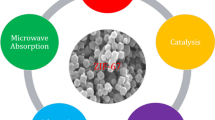Abstract
Molecular dispositions of Z-dol (linear perfluoropolyether with hydroxyl termini, –O–CF2–CH2–OH) applied over the carbon overcoat of magnetic hard disks are often depicted by an arrangement based on the hydrogen bonding interaction between the hydroxyl ends and some polar units of the carbon surface. The hydrogen bonding interaction is weak. The arrangement based on this mechanism is attained rapidly, but is slowly replaced (if partially) by a bona fide chemical bond. The issue of the exact nature of this chemical bond has been left unanswered in most of the reports. Past works deemed to have explored and elucidated the identity of the bond in question are gathered, reviewed and deductively presented. The review, we believe, clearly shows that the bonding in question involves (1) dangling bonds shielded within the sputter-deposited carbon, (2) transfer of the hydrogen atom of the hydroxyl unit of Z-dol to the dangling bond site, and (3) attachment of the remaining alkoxy system, Z–O–CF2–CH2–O•, to the carbon surface as a pendant ether unit. The Z-dol moiety thus attached is held by a bona fide chemical bond, and cannot be replaced by water molecules nor removed by solvent extraction.















Similar content being viewed by others
References
See, for example, M.S. John, S. Izumisawa, Q. Guo, D.M. Philips and Y.T. Hsia, IEEE Trans. Mag. 39 (2003) 754
See, for example, R.J. Waltman, D. Pocker and G. Tyndall, Tribo. Lett. 4 (1998) 267
See, for example, G.W. Tyndall, P.B. Leezenberg, R.J. Waltman and J. Castenada, Tribol. Lett. 4 (1998) 103
Karis T.E. (2000) J. Colloid Interface Sci 225:196
See, for example, G.W. Tyndall, T.E. Karis and M.S. John, Tribol. T. 42 (1999) 463
Ma X., Gui J., Smoliar L., Grannen K., B. Marchon., John M.S., Bauer C.L. (1999) J. Chem. Phys. 110:3129
Tagawa N., Tateyama T., Mori A., Kobayashi N., Fujii Y., Ikegami M. (2004) J. Tribol. 126:751
Yanagisawa M. (2001) Jpn. J. Appl. Phys. 40:761
Rühe J., Blackman G., Novotony V.N., Clarke T., Street G.B., Kuan S. (1993) J. Appl. Polym. Sci. 53:825
Kasai P.H., Spiese C. (2004) Tribol. Lett. 17:823
Tyndall G.W., Waltman R.J., Pocker D.J. (1998) Langmuir 14:7527
Q. Dai and P.H. Kasai, unpublished results
M. Yanagisawa STLE SP–36 (1994) 25
Kasai P.H., Wass A., Yen B.K. (1999) J. Info. Storage Proce. Syst. 1:245
Kasai P.H. (2002) Tribol. Lett. 13:155
See, for example, M.E. Best, P.H. Kasai, Macromolecules 22 (1989) 2622
Koidel P., Wild Ch., Disher B., Wagner J., Ramsteriner M. (1989) Mater. Sci. Forum 52 & 53:41
Tsai H., Bogy D.B. (1987) J. Vac. Sci. Technol. A5:3287
Marchon B., Salmeron M. (1989) Phys. Rev. B39:12907
B. DeKoven, private communication
Spool A.M., Kasai P.H. (1996) Macromolecules 29:1691
Kasai P.H., Spool A.M. (1998) J. Phys. Chem. 102:7331
Kasai P.H., Spool A.M. (2001) IEEE Trans. Magnetics 37:929
Waltman R.J., Shieh M.G. (2001) Macromolecules 34:6776
Acknowledgments
The author would like to thank Dr. M. Yanagisawa, Dr. Tom Karis, and Dr. N. Tagawa for their kind permissions to use their figures and Dr. B. DeKoven for his permission to present the result of vacuum deposition.
Author information
Authors and Affiliations
Corresponding author
Rights and permissions
About this article
Cite this article
Kasai, P.H. Z-dol and carbon overcoat: the bonding mechanism. Tribol Lett 26, 93–101 (2007). https://doi.org/10.1007/s11249-006-9056-1
Received:
Accepted:
Published:
Issue Date:
DOI: https://doi.org/10.1007/s11249-006-9056-1




